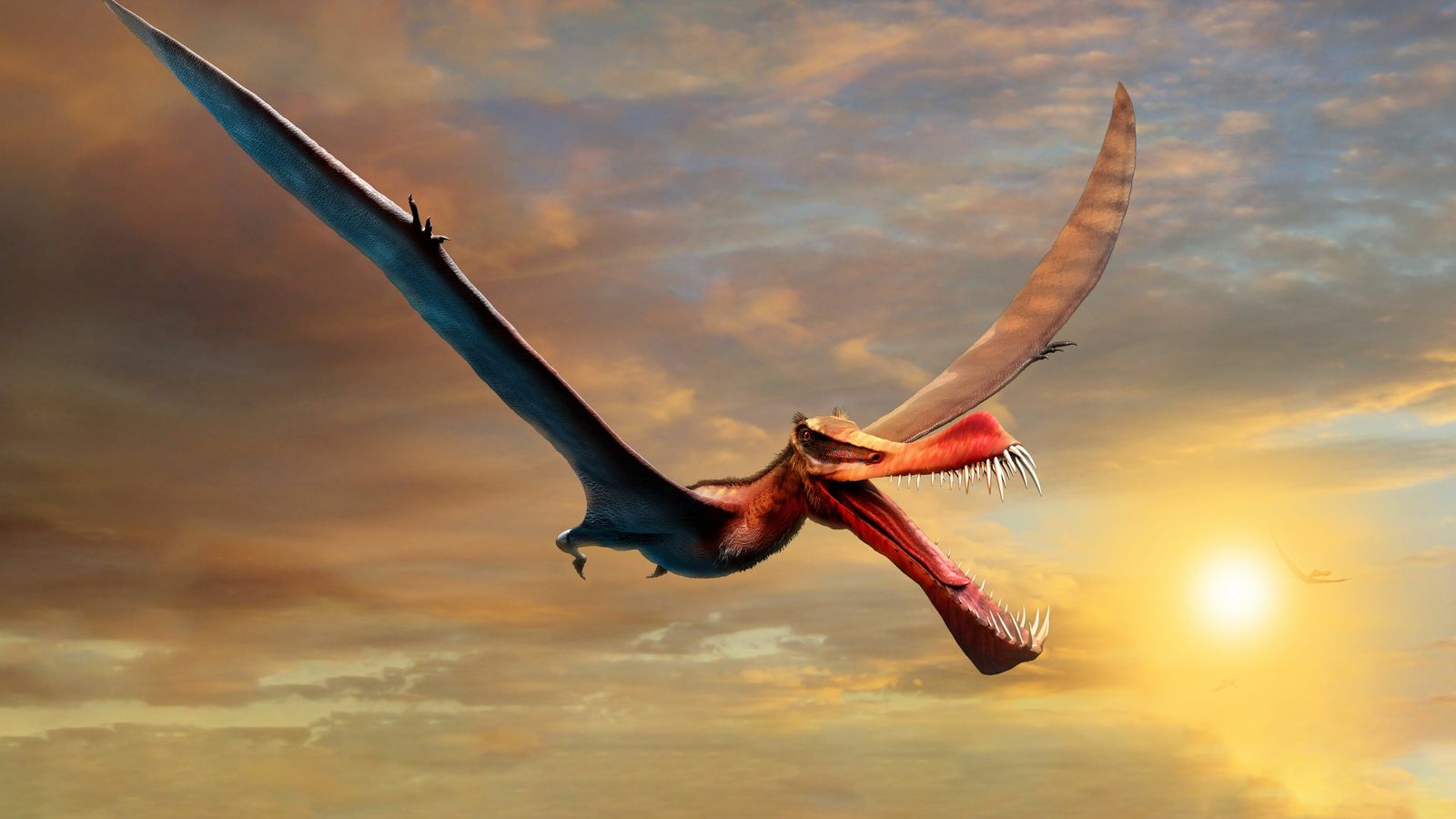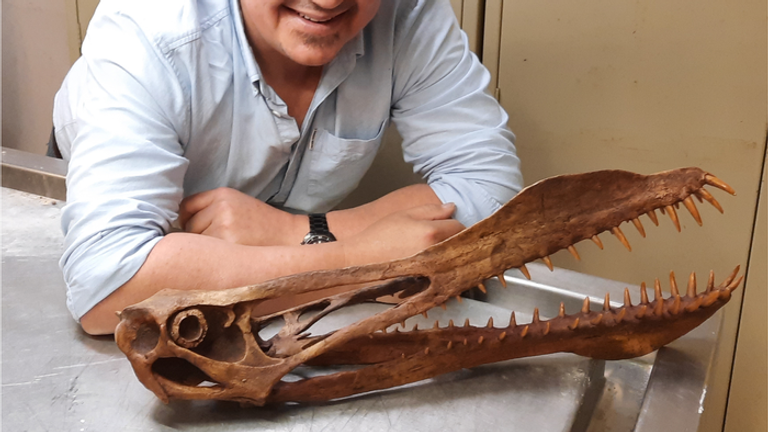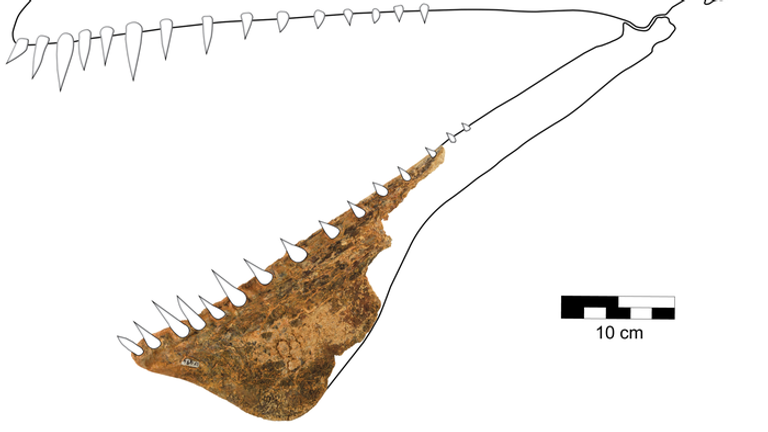Researchers in Australia have announced a new species of flying reptile from a fossil discovered in western Queensland, saying: “It’s the closest thing we have to a real life dragon.”
The fossil is believed to come from the largest flying reptile ever uncovered in the country, a pterosaur that would have soared over the vast inland sea that once covered much of the outback.
Tim Richard, a PhD student at the University of Queensland’s Dinosaur Lab, said: “The new pterosaur, which we named ‘Thapunngaka shawi’, would have been a fearsome beast, with a spear-like mouth and a wingspan around seven metres.”
Mr Richard led the research team analysing a fossil of the creature’s jaw which was discovered in western Queensland, the northeastern Australian state, and published the research in the Journal of Vertebrate Paleontology.
He said: “It’s the closest thing we have to a real life dragon. It was essentially just a skull with a long neck, bolted on a pair of long wings. This thing would have been quite savage.
“It would have cast a great shadow over some quivering little dinosaur that wouldn’t have heard it until it was too late,” he added.
Pterosaurs are the winged cousins to dinosaurs. Over 100 species of the reptiles have been discovered, varying between the size of a fighter jet to as small as a sparrow.
Thapunngaka shawi was one of the larger ones, with its skull alone more than a metre long and filled with around 40 teeth designed to grasp the fish which inhabited the Eromanga Sea, which no longer exists.
The new species belonged a group of pterosaurs known as anhanguerians, which inhabited every continent around 140 to 92 million years ago.
They were perfectly adapted for powered flight with thin-walled and relatively hollow bones, but these adaptations mean their fossilised remains are rare and usually poorly preserved.
“It’s quite amazing fossils of these animals exist at all,” Mr Richards said. “By world standards, the Australian pterosaur record is poor, but the discovery of Thapunngaka contributes greatly to our understanding of Australian pterosaur diversity.”
The fossil was found in a quarry just northwest of Richmond in Queensland back in June 2011 by a local fossicker called Len Shaw who had been “scratching around” in the area for decades.
The name of the species was chosen to honour the First Nations people of the Richmond area where the fossil was found and the now-extinct language of the Wanamara Nation.
“The genus name, Thapunngaka, incorporates thapun [ta-boon] and ngaka [nga-ga], the Wanamara words for ‘spear’ and ‘mouth’, respectively,” explained Dr Steve Salisbury, co-author on the paper and Tim Richard’s PhD supervisor
“The species name, shawi, honours the fossil’s discoverer Len Shaw, so the name means ‘Shaw’s spear mouth’,” he added.


